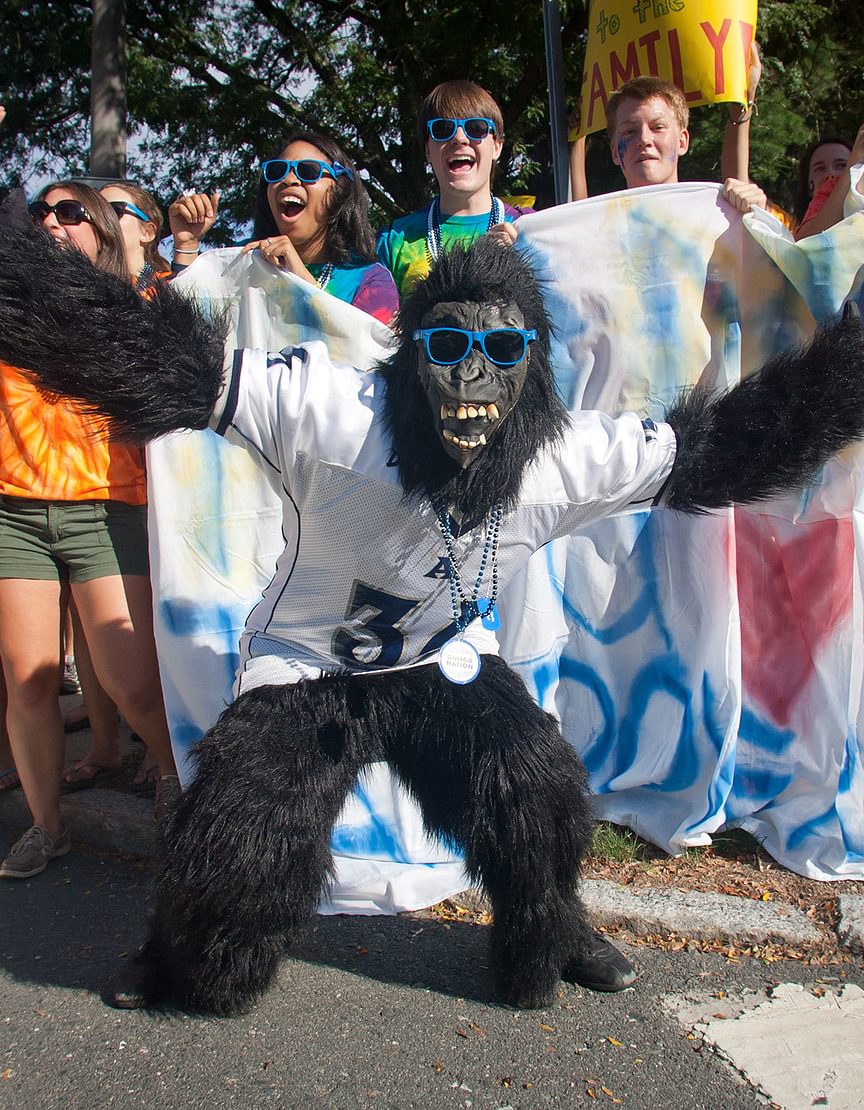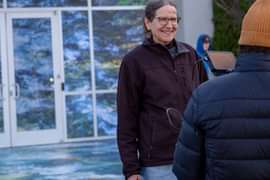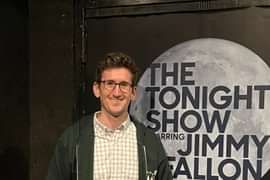
February 24, 2014
Before Gunga, a motley group of mascots served Abbot and Andover
Creatures, some mythic, some human, and some just too wildby Amy Morris
Clutching a coconut to his side, School President Malcolm P. Galvin ‘86 proudly led the senior procession through Cochran Chapel amid the cheers and chants of underclassmen. It was the first All-School meeting of the 1985-1986 academic year. When the chants of “four more years” and “86!” finally subsided, he stepped to the podium and lifted the tropical drupe for all to behold. Then, he dropped a bombshell.
Galvin announced to the student body that he had a letter, addressed “To the Humans of the Phillips Andover Community,” written by an ape named Gunga. The message, said Galvin, had been stuffed inside the coconut, which had been recently discovered in the Bird Sanctuary. Galvin then read aloud the missive, an appeal to all students to keep alive that warm communal tone set by orientation throughout the coming year.
Since that morning, Gunga (who, legend holds, had lurked undetected in the Bird Sanctuary for untold millennia before deciding to emerge in 1985) has been a conspicuous fixture on campus. But, the Right Honorable Ape, though surely a legend in his own time, cannot lay claim to being Phillips Academy’s longest serving mascot, nor its wildest, its most literate, or, for that matter, its most advanced hominid.

Need a mascot? Why not kidnap one? Six-year-old Pete Dugan’s wild ride
In 1896, a group of PA boys knocked on the front door of a small house in Lawrence and asked the gentleman who answered if they might borrow his little boy for a few days, as they were in need of a mascot for PA’s upcoming Class Game competition. Unbelievably, Peter Dugan’s guardian agreed, and the six-year old was taken from bed and spirited to Andover, where he was kept hidden in a dorm room for three days from the rival team.
In his later accounts to the Phillipian, Dugan recalled being well fed and cared for over the course of his captivity. He fulfilled his mascot duties for the 1896 intra-campus competition, and though he was returned home, he continued to serve on and off as PA’s mascot for the next six years.
The little boy shows up in numerous press accounts of various PA sporting events, such as in a Boston Globe account of the 1896 Andover-Exeter football game, in which “little Peter Durgin [sic], the Andover mascot, in his suit of blue and white, carried the football in front of the Andover players.” The boy’s red counterpart that day was a big gray St. Bernard. In 1897, the Globe spotted the little boy at another PA game, bedecked in the same garb, guiding a “gaily-decorated billy goat up and down the side lines.”
As if being pseudo-abducted, forced to wear little suits, and made to drag billy-goats and rat terriers up and down side lines and around bases wasn’t humiliating enough (at least from an outsider’s perspective — the Andover Townsman did report at the time that the boy seemed to “appreciate the importance of his position,” and Dugan himself later said he enjoyed the whole experience), imagine this: In 1902, Dugan’s colleague, a dog by the name of Andy, “wrote” an essay for the Mirror, in which he recalls being led around by little Dugan with a chain. Of the ceremonial walk, the dog commented, “if it had not been for looks I should not have suffered this indignity.“
Gunga may beat his chest, but a 1923 mascot showed the boys who’s boss
In the spring of his senior year, Thomas Shipman ’1923 received a most unusual package in the campus mail: a live coyote. As it turned out, his father, who was living in Atlanta at the time, had gotten a hold of one and, thinking it would be the perfect mascot for PA, crated it up and sent it north.
Although little detail exists about the wild creature’s reign on campus, the May 17, 1923 edition of the Boston Globe reported the natural outcome. Beneath the headline “Coyote was Too Wild to be Andover Mascot,” the paper reported the animal was too “untamed” and would be “dispatched by express” to the Franklin Park Zoo in Boston.
“Once a Gargoyle, always a Gargoyle, Once a Griffin, always a Griffin”
As arbitrary, and some may say nonsensical, as the notion that a gorilla should represent PA spirit, are the dual entities that served as symbols for Abbot Academy’s intra-campus competitions for the better part of the 20th century: every Abbot girl was assigned to one of two groups — from her first day on campus to her very last, she was either a Gargoyle or a Griffin.
Abbot’s Headmistress Bertha Bailey split the student body into two groups sometime after 1920, in order to fill two significant social voids on campus: First, with the school’s disbanding of secret societies sometime after 1910, the Gargoyle-Griffin system provided every student the opportunity to “belong” to a group. Second, the system gave a framework for intra-campus competition, which became an important ingredient to the school’s successful —and progressive — physical education program.
It is said that Bailey came up with symbols of the Gargoyle and the Griffin on a whim, and that the students immediately embraced them. For decades, the factions created stuffed symbols and donned thematic attire to celebrate their symbolic mascots for the annual field day; but eventually, trying to somehow interpret themes for the two seemed contrived. (Particularly for the Gargoyles: how does one create a dynamic theme for a float or for a march, celebrating an architectural concept — more specifically, for the grotesque faces which spurt water from their mouths and loom over doorways and cornices?) It really didn’t make sense. And yet, it’s apparent, the same could be said of other PA mascots.
Why a hairy ape? Why not?
Categories: Athletics, Campus Life
Other Stories

When Sukey Bryan ’79 displays her art, she wants people to feel like they're part of nature.




